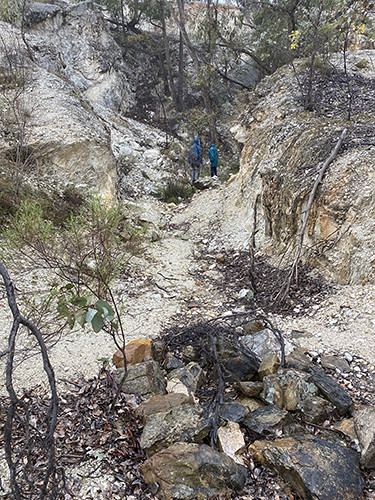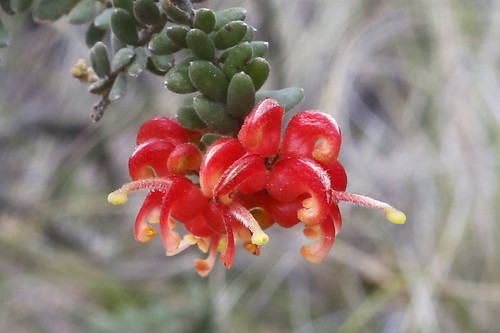In the light of the upcoming management burn in Kalimna Park, here are a couple of photos to brood on. They were taken at a point on the Circuit Walk track last week. One side of the track was burned by DELWP five years ago, and looks like this:

Fuel reduced bush: plenty of flammable Cassinia and other understorey plants…
The other side was not burned, and looks like this:

Directly opposite the photo above: unburnt bush, with apparently lots less fuel.
On the face of it, the unburned section has less fuel than the ‘fuel reduced’ section. The photos illustrate the complexity of fuel reduction exercises. Contrary to widespread belief, fuel reduction burns don’t vacuum up all the fuel, leaving it nice and safe: they may provoke prolific regrowth, and even increase the fuel load. That’s why detailed research should accompany every burn, to show all aspects of the exercise, ecological and safety related. This, of course, would cost a lot of money…
DELWP has put a lot of research effort into the upcoming burn, perhaps provoked by the efforts of community workers to document the presence of the Copper Butterfly. Its preparation works for this exercise have provoked some disquiet. We’ll report on these in future posts.
















 Click on image for info/order page
Click on image for info/order page Click on image for info/order page
Click on image for info/order page Click on image for info/order page
Click on image for info/order page




















